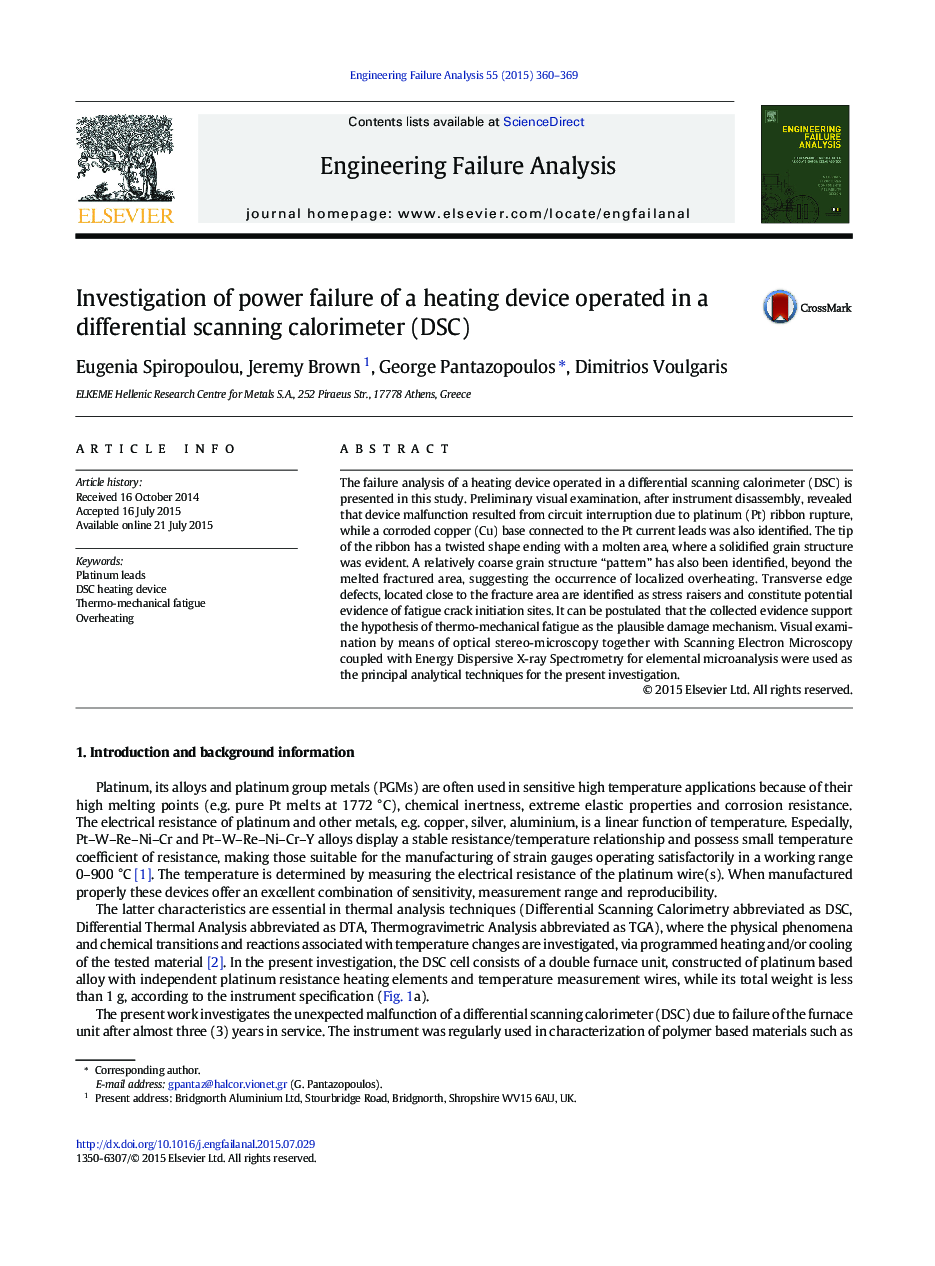| Article ID | Journal | Published Year | Pages | File Type |
|---|---|---|---|---|
| 763357 | Engineering Failure Analysis | 2015 | 10 Pages |
•Investigation of fracture of Pt wire of a furnace operated in a DSC instrument.•Fracture surface morphology, studied using SEM/EDS, displayed evidence of overheating.•Transverse crack initiation at edges resulted in fatigue failure, assisted by thermal mechanical loading.•Copper corrosion scale could have an adverse effect on current conduction, contributing to overheating incidents.
The failure analysis of a heating device operated in a differential scanning calorimeter (DSC) is presented in this study. Preliminary visual examination, after instrument disassembly, revealed that device malfunction resulted from circuit interruption due to platinum (Pt) ribbon rupture, while a corroded copper (Cu) base connected to the Pt current leads was also identified. The tip of the ribbon has a twisted shape ending with a molten area, where a solidified grain structure was evident. A relatively coarse grain structure “pattern” has also been identified, beyond the melted fractured area, suggesting the occurrence of localized overheating. Transverse edge defects, located close to the fracture area are identified as stress raisers and constitute potential evidence of fatigue crack initiation sites. It can be postulated that the collected evidence support the hypothesis of thermo-mechanical fatigue as the plausible damage mechanism. Visual examination by means of optical stereo-microscopy together with Scanning Electron Microscopy coupled with Energy Dispersive X-ray Spectrometry for elemental microanalysis were used as the principal analytical techniques for the present investigation.
